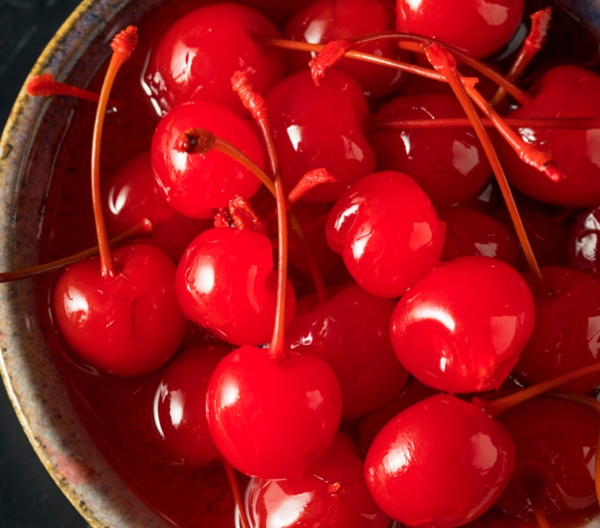Red 3: Washington, Illinois introduce new ban bills

Pixel-Shot - stock.adobe.com.
Washington and Illinois move to ban the use of carcinogenic Red 3, along with brominated vegetable oil, propylparaben, and potassium bromate, from foods manufactured, sold, delivered, distributed, or held in the states.
Earlier this month, Washington state Representatives Duerr, Walen, Ryu, Berry, Ramos, Ramel, Reed, Leavitt, Kloba, Donaghy, Gregerson, Thai, Reeves, Fosse, and Pollet introduced HB1921, a food safety bill modeled on the landmark California Food Safety Act (AB418). If passed, HB1921 would ban four harmful food additives from all foods and beverages sold in Washington.
The Washington bill, currently under review with the state’s House Committee on Agriculture and Natural Resources, seeks to ban four food additives—Red 3, brominated vegetable oil, propylparaben, and potassium bromate—from all food products for sale in the state.
In Illinois, SB2637, introduced by state Sen. Willie Preston (D-Chicago) and Sen. Rachel Ventura (D-Joliet) in November 2023, would ban the same four additives; Sen. Preston has promised to amend the bill to include a ban on titanium dioxide in foods and beverages, as well. “I realized we have a moral obligation to rid ourselves of these food additives that are pretty clearly linked to these diseases,” Preston said.
“I have a new food bill which would ban four food additives in the state of Washington. Interestingly enough, [the four ingredients] all cause cancer or are endocrine disruptors,” said Rep. Duerr, who introduced HB1921. “They were actually banned in California last year, so I kind of stole the bill, but it's a good bill.”
Last year, California passed model legislation with AB418, the California Food Safety Act, becoming the first to protect consumers from harmful food ingredients at the state level and paving the way for other states to do the same. Similar bills were introduced to both chambers of the New York legislature, by Sen. Brian Kavanagh (D-Lower Manhattan) and Assemblymember Dr. Anna Kelles (D-Ithaca), in 2023 and are currently in Senate and Assembly committee reviews.
The health risks these food additives pose to consumers
Red 3 is a particularly egregious case of regulatory failure. The FDA learned Red 3 was a carcinogen in the 1980s and declared it as such in 1990. For that reason, the agency eliminated Red 3 from cosmetics and drugs applied to the skin. The same year, the FDA said it would “take steps” to ban the use of Red 3 in foods, ingested drugs, and dietary supplements. That ban never arrived, and Red 3 is still used legally in thousands of readily available food products in the US, including many popular candies and snacks, and nearly all maraschino cherries.
Brominated vegetable oil, or BVO, is an emulsifier that’s used to mix citrus flavors into liquids, usually in soft drinks. BVO leaves residues in body fat and fat in the brain, liver, and other organs. Animal studies indicate that BVO is transferred to nursing infants and can cause microscopic changes to heart cells, fatty changes in the liver, and impaired growth and behavioral development. An animal study that fed rats BVO at quantities similar to what some people might consume through food and beverage sources also showed changes in some levels of thyroid hormones and impacts on the thyroid gland; the thyroid gland and its hormones play a number of very important roles in the body, such as regulating metabolism and brain development. In December 2023, the FDA proposed a ban on BVO.
Learn more: Why the FDA might finally ban brominated vegetable oil
Potassium bromate has been banned virtually worldwide except in Japan and the United States. Most bromate rapidly breaks down to form innocuous bromide. However, bromate itself causes cancer in animals, and the cumulative effect of consuming tiny amounts of bromate poses a small risk to consumers. In 1999, CSPI petitioned the FDA to ban bromate. Since then, numerous millers and bakers have stopped using it.
Learn more about potassium bromate in Chemical Cuisine
Parabens are used as preservatives in personal care products, some household products like cleaners and soaps, and in some processed foods. Propylparaben, along with some other paraben ingredients, has been banned from food products in Europe due to health concerns involving endocrine disruption and fertility issues. Parabens are not as easily avoided as you might expect; some foods marketed as healthy , like some Weight Watchers snack cakes, contain propylparaben.
Titanium dioxide is a color additive currently approved for use in the U.S. in human food, drugs, cosmetics, and medical devices like contact lenses. It can be found in baked goods, chewing gum, chocolate, puddings, hard-shelled candies, frosting, dressings, sauces, and coffee creamers, among other food products, where it imparts a white color. Titanium dioxide was recently banned from use in food in Europe over concerns that it could harm human health. Based on evidence that titanium dioxide nanoparticles present in food-grade titanium dioxide can accumulate in the body and cause DNA damage, CSPI rates titanium dioxide as “Avoid.”
Learn more about titanium dioxide in Chemical Cuisine
State bans fill federal regulatory gap
Until California’s AB418 comes into effect, each ingredient specified in these bills is currently legal to use in food products nationwide—yet all are banned for most food uses in the EU. Like California’s AB418, Washington, Illinois, and New York’s proposed laws would closely mimic the EU’s food product regulations inside the states as a proactive measure to make up for the FDA’s failure to protect American consumers.

California Assemblymember Gabriel, author of the California Food Safety Act that became law last year, said that bill took aim at the FDA, which he feels is behind the curve on protecting consumers from unsafe food chemicals in the U.S. “The idea here is to get these manufacturers to do what they have already done in Europe, what they have already done in Canada, what they’ve already done in so many other countries around the world, which is just to make a very minor modification to their recipes. In most cases, it is changing out one ingredient for another.”
There is good news for manufacturers, as Assemblymember Gabriel noted: These ingredients, used variously as preservatives, colorants, and texture modifiers, have safer counterparts already in wide use on the global market. And because California’s AB418 is now law and the state economy is the largest in the country (and fifth-largest in the world), manufacturers planning to continue selling their products in that state will already have a suitable version available for sale in Washington, Illinois, and New York, should their ban bills pass.
CSPI’s work to ban Red 3
With inaction from the FDA in the intervening decades between today and the 1990 ban on the use of Red 3 in cosmetics and topical drugs, the Center for Science in the Public Interest took matters into our own hands and petitioned the FDA in 2022 to finally remove the carcinogenic dye from the food supply.
“Most people would be quite surprised to learn that a known carcinogen is banned for use in lipstick but still widely used in thousands of foods, including many candies, baked goods, and drinks marketed to children,” said CSPI President and Executive Director Dr. Peter G. Lurie in October 2023. “California has corrected that absurdity for Californians, and, if past is prologue, the impact of this law will reverberate throughout the nation and at the FDA.”
While the FDA has yet to respond to CSPI’s 2022 petition—or to ban the cancer-causing food dye in the 34 years since the agency deemed it too unsafe to apply to the skin—the California bill does appear to be reverberating. Washington is the fourth state to introduce such legislation; Illinois became third with its AB418 copycat bill filed in November; New York Senate Bill S6055A was second after California.
These state-level additive bans would not apply to animal feed, cosmetics, medicines, personal care, or other household products. Some popular beverages, candies, and other popular foods would need to be reformulated to meet the states’ new requirements if the bills become law. Because all such bills introduced thus far have an effective date of Jan. 1, 2027, manufacturers would have until then to bring their products into compliance.
How to avoid harmful food additives
While the burden to avoid harmful ingredients in our food supply shouldn’t fall to the consumer, the reality is that it does. You can support your health by avoiding Red 3, BVO, propylparaben, and potassium bromate—as well as any ingredient we rate “Avoid” in our Chemical Cuisine database of food additives. (Pro tip: Bookmark the database for easy access to our ratings and entries while you’re grocery shopping.)
Read product labels to check for harmful additives, and when in doubt, opt for whole foods and water or unsweetened beverages, which have far fewer—or no—food additives of concern.
Support CSPI today
As a nonprofit organization that takes no donations from industry or government, CSPI relies on the support of donors to continue our work in securing a safe, nutritious, and transparent food system. Every donation—no matter how small—helps CSPI continue improving food access, removing harmful additives, strengthening food safety, conducting and reviewing research, and reforming food labeling.
Please support CSPI today, and consider contributing monthly. Thank you.

Stirring the Pot
Join the fight for safer, healthier food
Sign up to receive action alerts and opportunities to support our work in Stirring the Pot, our monthly newsletter roundup.

